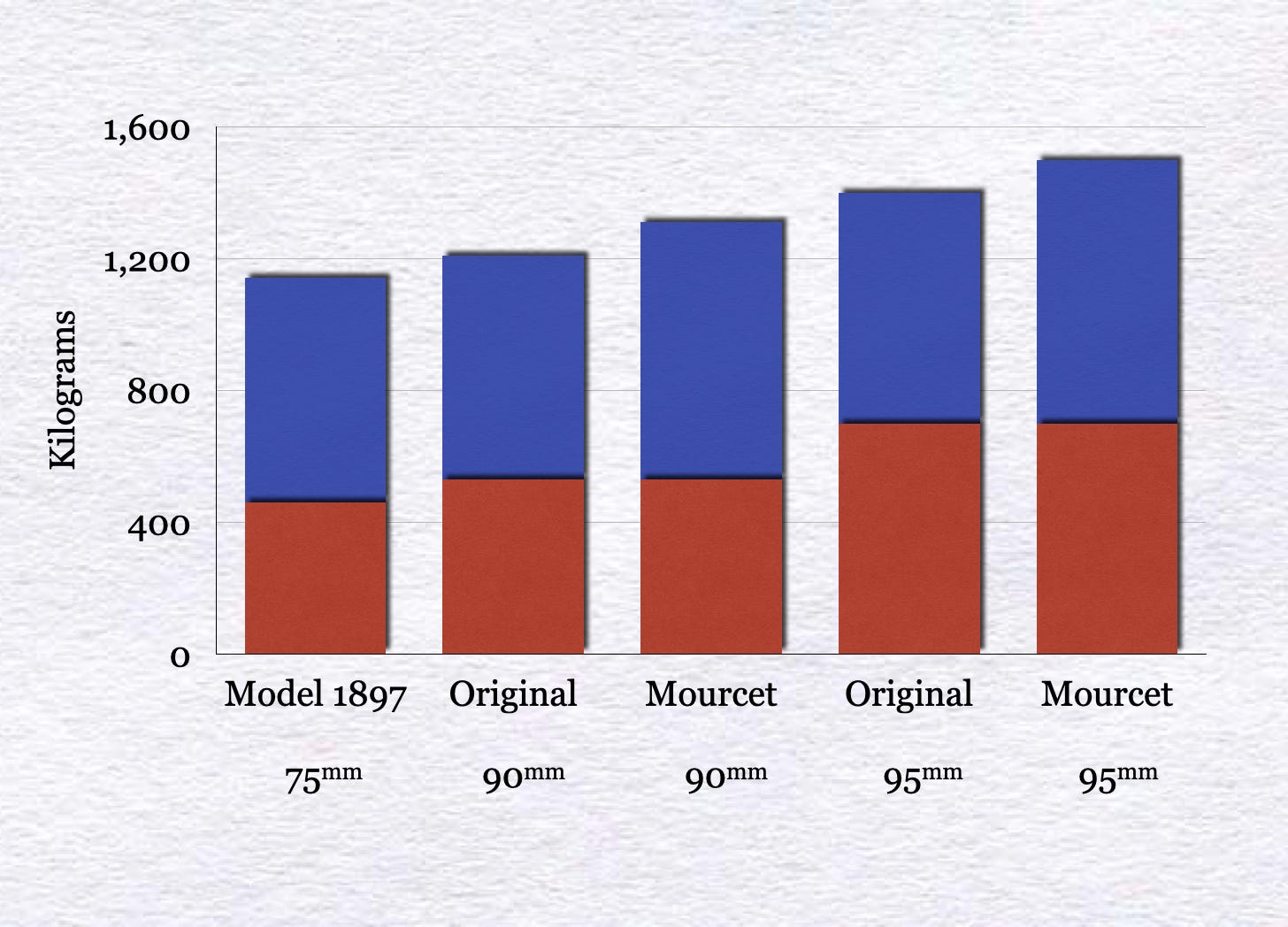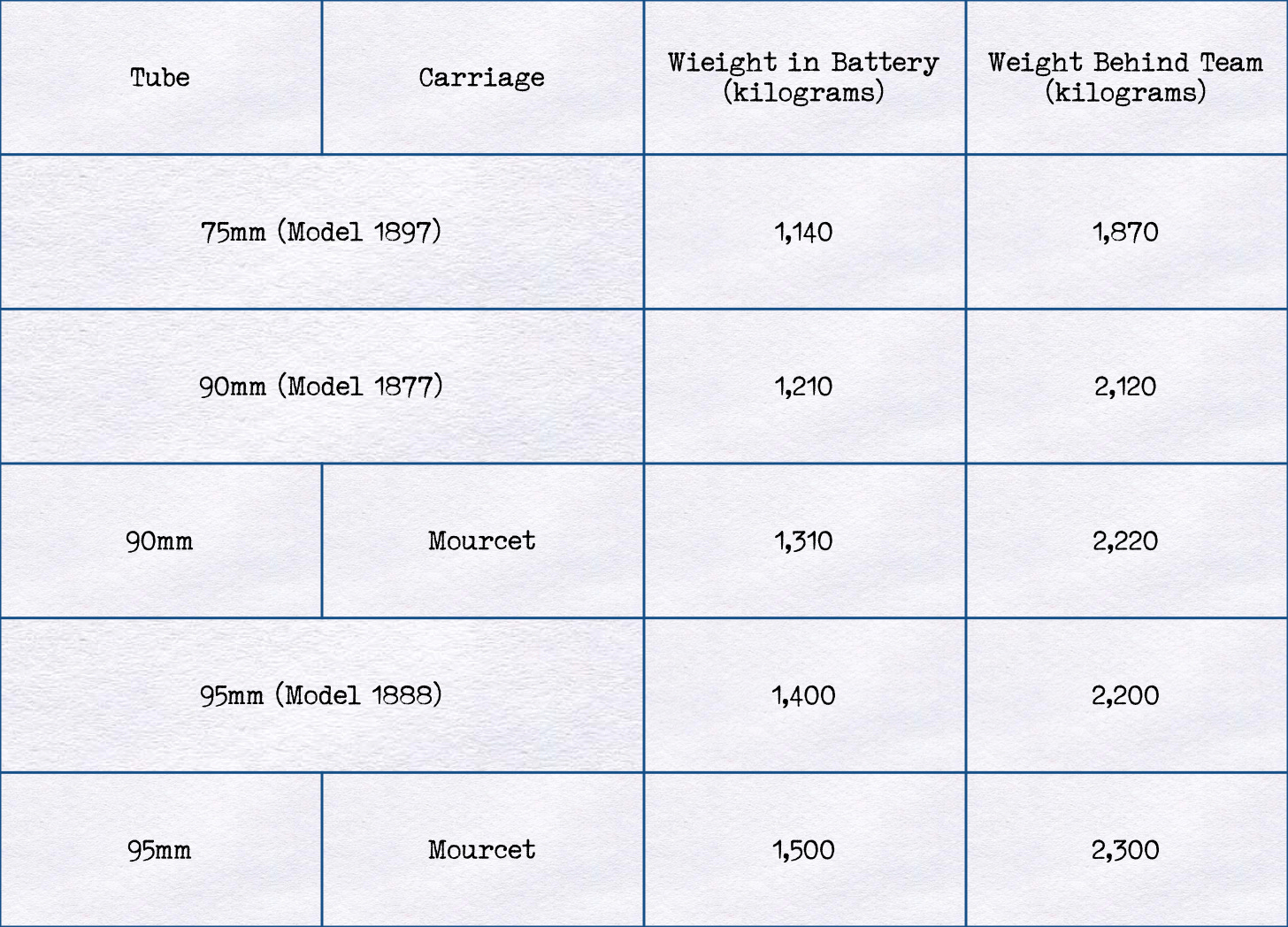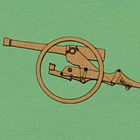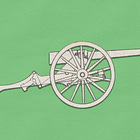At 461 kilograms, the barrel assembly of the 75mm field gun weighed much less than the 530 kilogram tube of its predecessor, the 90mm de Bange field gun. This advantage stemmed, in part, from the smaller caliber of the new piece. It also owed much to improvements in the steelmaker’s art that had taken place in the last quarter of the nineteenth century, thereby making barrels of a given strength lighter than they would otherwise have been.1
Thanks to the same factors, the carriage of the 75mm piece, which was fitted with both a substantial recoil-absorbing mechanism and an armored shield, weighed no more than the rigid mounting of the 90mm piece. (Marvelous to say, both tilted the scales at 680 kilograms.) Thus, when fully assembled, the new 75mm field gun weighed (at 1,141 kilograms) but a little more than the weapon it replaced (1,112 kilograms.)
The version of the Mourcet carriage designed for the 90mm field gun seems to have weighed 780 kilograms.2 When added to a 530-kilogram tube, this would result in a field piece that weighed 1,310 kilograms “in battery” and 2,120 kilograms “behind the team.” (The first figure describes the weight of the tube and its carriage. The second adds the weight of the two-wheeled limber that, when attached to the gun, allows it to be pulled by a team of horses.)
French gunners would thus have found it somewhat more difficult to manhandle older field guns, whether 90mm or 95mm, mounted on Mourcet carriages. Moreover, as the limbers used with the older field guns were larger than those designed for the new 75mm gun, the six horses of standard field artillery team would have had to work much harder to pull the Mourcet-mounted field guns.3
Adding an armored shield would have added an additional hundred kilograms to the weight of a Mourcet-mounted field gun.4 Thus, it is likely that, in an age when the mobility of an artillery piece depended greatly on the muscles of man and beast, such shields would have remained on the drawing board.
In the absence of such protection, French gunners of the Mourcet era would have been more conservative when it came to the employment of field guns on the battlefield. Rather than imagining such weapons as assault guns avant la lettre, to move forward with the advancing infantry, they would, like their German counterparts, have focused on the use of preliminary bombardments.
For Further Reading:
To Share, Subscribe, or Support:
As The Tactical Notebook is a serious blog, the editor requests that readers refrain from describing these improved metal-making techniques as the "Bessemer Mucho” method.
Captain Leroy of Artillery School, that the Mourcet carriages for the 90mm and 95mm guns weighed “less than 800 kilos.” Cours d'artillerie. Historique de l'artillerie de l'origine à 1914 (Fontainebleu: École Militaire d’Artillerie, 1922) page 64. As the original carriages for both pieces weighed 680 and 700 kilograms (respectively), it is reasonable to assume that the Mourcet carriage for the 90mm gun was about 20 kilograms lighter than the Mourcet carriage built for the 95mm piece.
As The Tactical Notebook is a serious blog, the editor asks readers to resist the temptation to compare this 350 kilogram difference to the approximate weight of the Backstreet Boys.
H.A. Bethell Modern Guns and Gunnery (Woolwich: FJ Cattermole, 1907) page 51











Or more..
In line with being serious, avoid all split tail references.
This is a serious 🧐 Blog